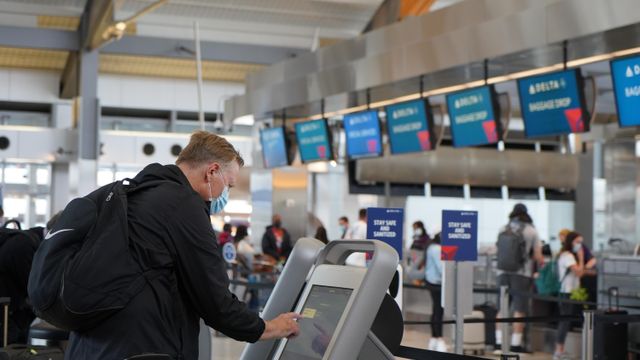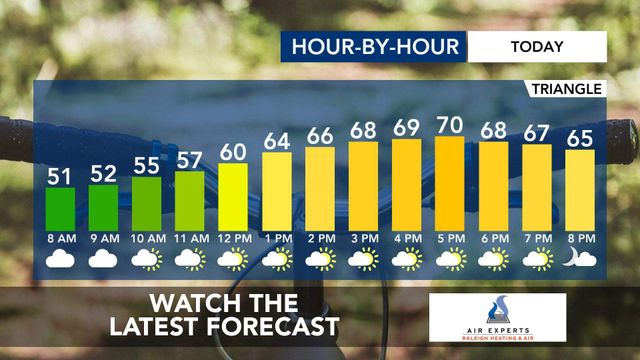Does my mask protect me if nobody else is wearing one?
Q: If I’m the only person wearing a mask on a plane or subway train, in a store or at another indoor location, am I really protected from infection?
A: It is true that masks work best when everyone around you is wearing one. That is because when an infected person wears a mask, a large percentage of the infectious particles they exhale are trapped, stopping viral spread at the source. And when fewer viral particles are floating around the room, the masks others are wearing are likely to block those particles that have escaped.
But there is also plenty of evidence showing that masks protect the wearer, even when others around them are mask-free.
The amount of protection depends on the quality of the mask and how well it fits. Health experts recommend using an N95, KN95 or KF94 to protect yourself against the omicron subvariant BA.2, which is now the dominant version of the coronavirus and is far more infectious than previous strains.
Other variables, such as how much time you are exposed to an infected person and how well a space is ventilated also will affect your risk.
On most planes, for example, the cabin air is frequently pumped through high-efficiency particulate air (HEPA) filters that are pretty good at reducing virus transmission. But that doesn’t completely eliminate your risk. In a modeling study published in December 2021, researchers found that passengers sitting in the same row or one row away from someone who had COVID-19 still had a high risk of being infected through direct respiratory droplets. Wearing a mask reduced the risk of infection by 54%.
In closed settings like a plane, it can be hard to avoid a mixed group of vaccinated and unvaccinated people, symptomatic or asymptomatic people, all of whom may transmit the coronavirus at varying levels. And the flight may not even be the riskiest part of a trip.
Air circulation may be running at low strength or completely turned off during boarding and deplaning, so those periods, as well as the time you spend at the airport, may be when you are at most risk of exposure and may benefit from wearing a mask.
Other settings may be even more worrisome.
“I know everyone talks about planes, but I would say buses are probably the riskiest, then trains and then planes, in order of highest to lowest,” said Linsey Marr of Virginia Tech, an expert in airborne transmission of viruses.
“People talk about planes having great ventilation filtration, and they do and that greatly helps reduce the risk of transmission,” she added. “But the virus is going to be in the air, no question in my mind, because there’s still large numbers of cases.”
There is also real-world data supporting the protective effects of masking in other indoor locations. A 2020 investigation of a hotel outbreak in Switzerland, for instance, found that several employees and a guest who tested positive for the coronavirus were wearing only face shields (with no masks); those who wore masks were not infected.
And a Tennessee study found that communities with mask mandates had lower hospitalization rates than areas where masks weren’t required.
A number of laboratory studies, too, have documented that a mask protects the person who is wearing it, though the level of that protection can vary depending on the type of mask, the material it is made from, the experimental setup and how particle exposure was measured.
But the bottom line of all the studies is that a mask reduces the potential exposure of the person wearing it. Here are some of the findings:
— One study from the Centers for Disease Control and Prevention found that a standard surgical mask protected the wearer only from about 7.5% of the particles generated by a simulated cough. But knotting the loops and tucking in the sides of the medical mask reduced exposure by nearly 65%. Covering the surgical mask with a cloth mask, a technique known as double masking, reduced exposure to the simulated cough particles by 83%.
— A Virginia Tech study looked at how well homemade masks, surgical masks and face shields protected the wearer, based on virus particle size. The research showed that most masks could block very large particles, like those from a sneeze. But when the researchers looked at smaller aerosolized particles that are hardest to block, protection ranged from near zero with a face shield to about 30% protection with a surgical mask. (The percentages in the study can’t be directly compared with the CDC knot-and-tuck study because the testing methods were different.)
— A study from Tokyo tested how well different types of masks protected the wearer from actual coronavirus particles. The study showed that even a simple cotton mask offered some protection (17% to 27%) to the wearer. Medical masks performed better, including a surgical mask (47% to 50% protection), a loose-fitting N95 (57% to 86% protection) and a tightly sealed N95 (79% to 90% protection).
While the lab studies all show a mask can protect the wearer, how well the masks perform in the real world depends on a number of variables, including how consistently people use them, whether a person is in high-risk situations and the rate of infection in the community.
The laboratory studies showed that a high-quality medical mask, like an N95, KN95 or KF94, works best. While vaccination and a booster shot is the best protection against infection with the coronavirus, even vaccinated people should be cautious around crowds or large groups indoors when the vaccination status of others isn’t known.
Marr recommends wearing the highest-quality mask possible when you can’t keep your distance or be outdoors — or when nobody around you is masking up. That means an N95 or equivalent. This article originally appeared in The New York Times.











